Israel-Gaza war: Counting the destruction of religious sites
- Published
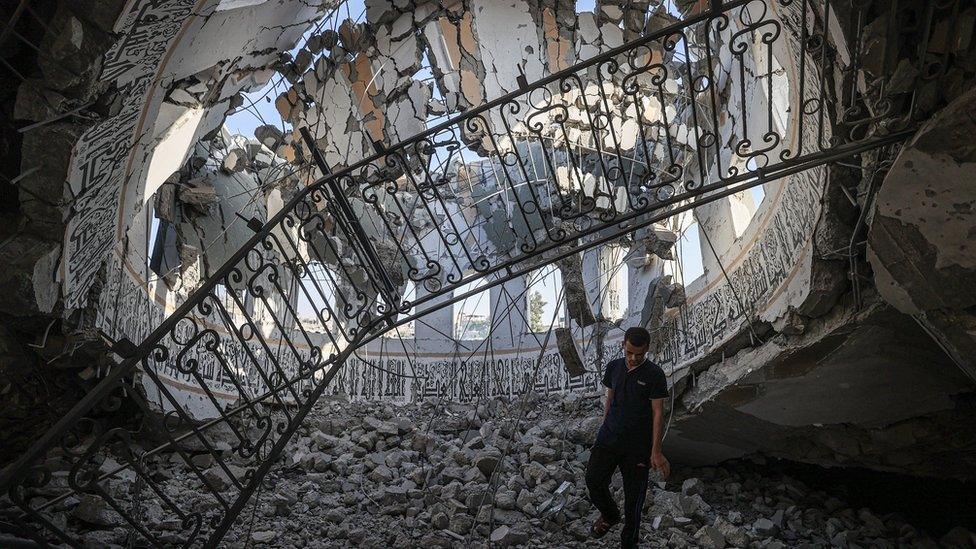
Khalid Bin Al-Waleed mosque in Khan Younis was reportedly struck by the Israeli military
Gaza is home to some of the oldest churches and mosques in the world, but many have not escaped the widespread destruction of Israel's military offensive.
Of 117 religious sites which were reportedly damaged or destroyed between 7 October, when Israel's campaign began, and 31 December, the BBC has verified 74 cases. Seventy-two are mosques and two are churches. Israel's offensive was triggered by Hamas's unprecedented attack on 7 October.
In its investigation, the BBC used satellite imagery and user generated content to examine evidence from both before and after buildings were hit.
In a statement, Hamas - the Palestinian Islamist group which rules Gaza - said 378 mosques and three churches had been hit up to 9 January, though this figure has not been independently verified.
The Israel Defense Forces (IDF) says Hamas fighters are using places of worship for cover and as places from which to launch attacks - something Hamas denies.
'An immediate death'
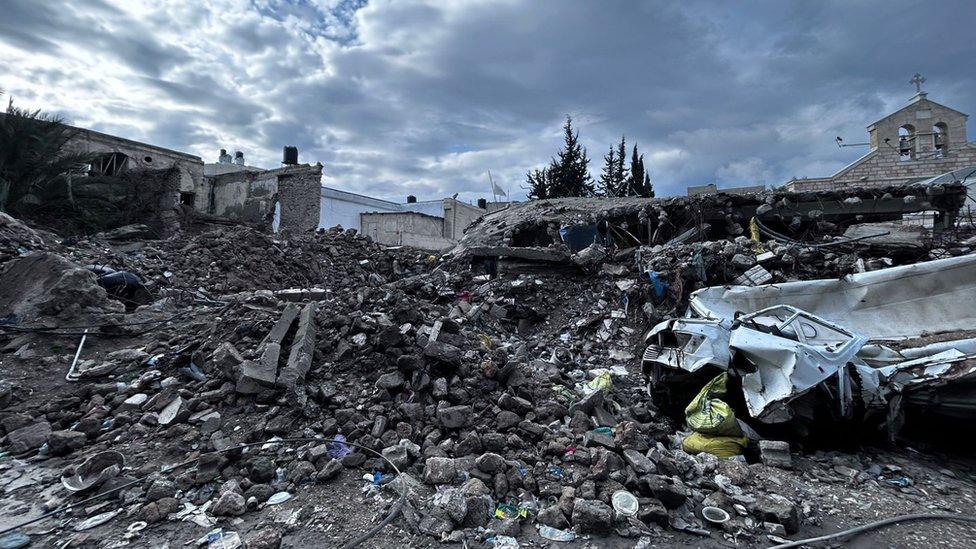
St Porphyrius Church in Gaza City has become a sanctuary for Palestinians fleeing the war
Believed to be one of the oldest churches in the world, St Porphyrius is one of a handful dotted around the Gaza Strip. Many of the territory's small Christian population, which before the war numbered about 1,000, has a strong connection to the land. St Porphyrius was a 5th Century bishop in Gaza whose tomb lies under the church.
Like many Palestinian Christians, Marian Saba and her family sought refuge within the church grounds, believing they would be safe. But on 19 October, as the night drew in, an Israeli missile hit one of the church's outer buildings, killing 18 people and injuring many more.
Marian said her 34-year-old brother-in-law Soliman was killed as he shielded his son from a collapsing wall. "It was a horrifying scene. I have never seen a dead body. I didn't know what to say," she said. "It was an immediate death."
Rami Tarazi was in one of the church's halls at the time of the blast. "It was a rocket missile that was so big even the people who were in the other hall came out in white dust," he said of the explosion, which did not impact the main building.
"We pulled out 16 people in pieces and two full corpses," he vividly recalls. One of the people killed was Rami's 36-year-old cousin Suliman, who Rami says had been "talking and laughing" with him just an hour earlier.
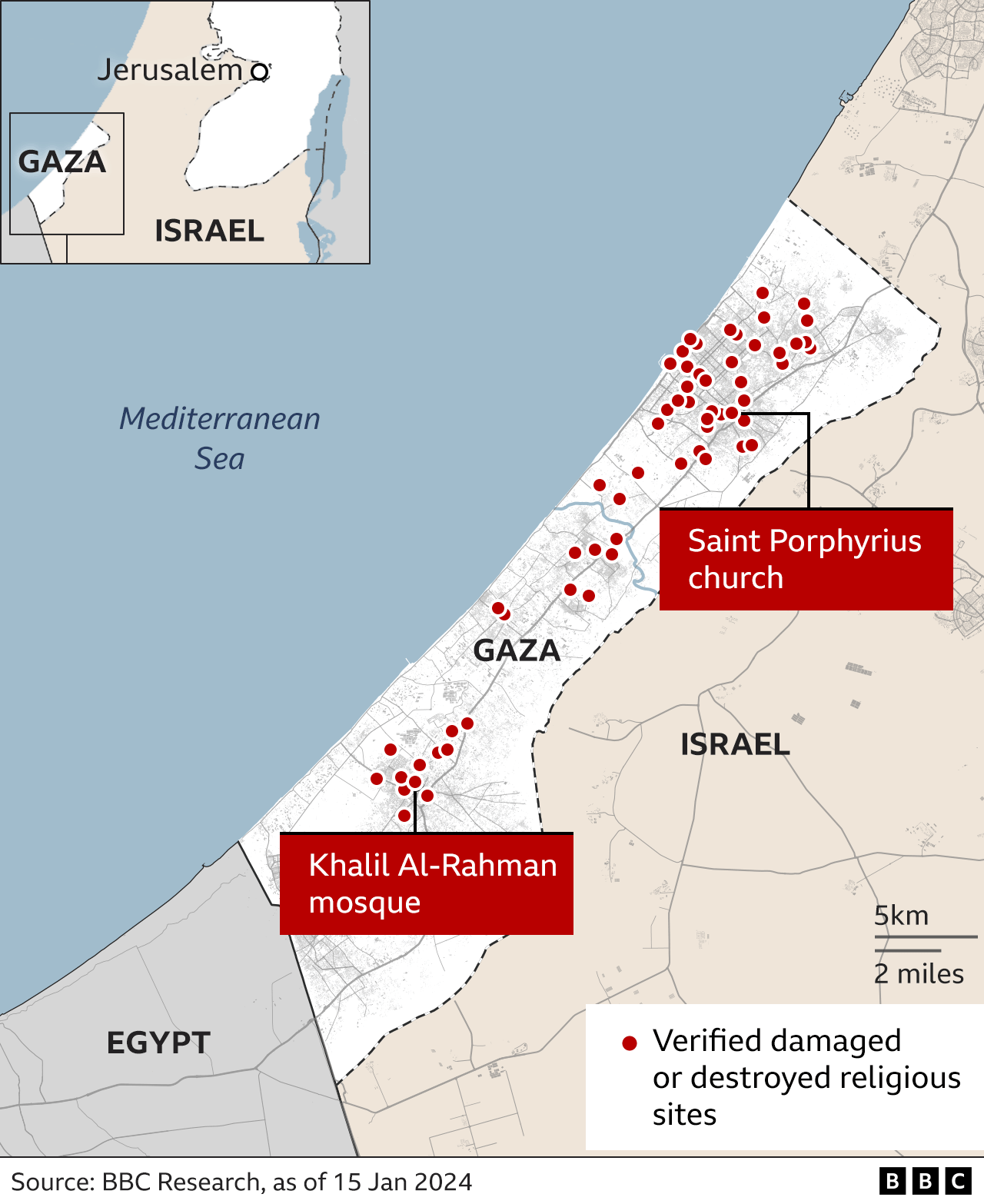
According to international humanitarian law, intentionally targeting religious buildings during conflict is a war crime. There is an exception, however, if such sites are being used for military purposes.
Videos uploaded by the IDF to social media show soldiers entering religious buildings it has targeted and showing underground tunnels it says were used by Hamas.
In this case, the IDF told the BBC that the church was not the intended target of the strike despite its grounds being hit as a result. It said the incident was under review.
Allow X content?
This article contains content provided by X. We ask for your permission before anything is loaded, as they may be using cookies and other technologies. You may want to read X’s cookie policy, external and privacy policy, external before accepting. To view this content choose ‘accept and continue’.
Some videos and photos being shared online also purport to show Israeli soldiers disrespecting the sanctity of religious places and glorifying destruction.
One image seen on X, formerly known as Twitter, shows an Israeli soldier posing in front of a fallen minaret which has been graffitied in Hebrew with the words "the temple will be rebuilt" - a reference to a belief that a third Jewish temple will be built on the contested holy site in Jerusalem known to Jews as the Temple Mount and to Muslims as Haram al-Sharif or the al-Aqsa Mosque compound.
The IDF said the behaviour of the soldier in the image was "severe and not in accordance with the IDF's values", adding that it was investigating the incident.
Dr Georgia Andreou from the Institute of Archaeology at University College London has been looking into the destruction of heritage sites in the Gaza Strip. She says many holy sites have great historical significance, and that the destruction of sacred, as well as heritage, sites in Gaza is "the worst I have ever seen".
'I miss the sound of prayer'
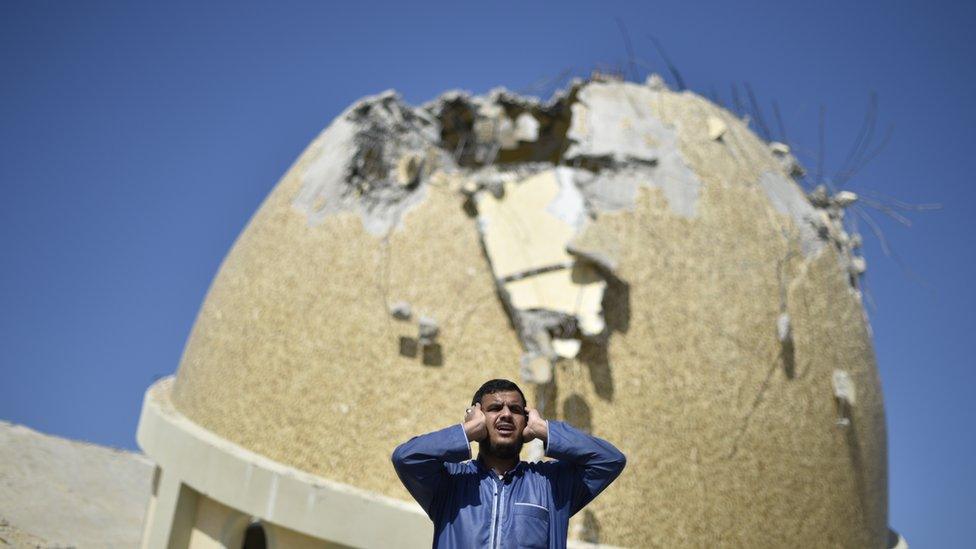
Few Palestinian Muslims in the Gaza Strip have been returning to destroyed mosques to pray
Many of the mosques in Gaza have been razed, and unlike those who take shelter in churches, Palestinian Muslims are choosing to seek refuge away from their places of worship.
In Khan Younis, the BBC verified that Khalil Al-Rahman mosque, which had reportedly been hit in an air strike in the area, had been damaged.
As a devout Muslim, Renad Alaa al-Bataa frequented this mosque, where she learnt to memorise the Quran. But since the war started she has not been back.
"Previously, the IDF seldom targeted mosques unless there were alleged militant targets. But this time, they've destroyed several beautiful mosques that nurtured us and taught us about our religion," she said.
During a week-long truce that took place in November, she says, the muezzin - the person who makes the call to prayer - devised a makeshift minaret and began calling for prayers five times a day from the top of what remains of Khalil Al-Rahman mosque. She says it brought her a sense of security that ended when Israel resumed fighting against Hamas.
Your device may not support this visualisation
One of the starkest images of destruction to emerge from Khan Younis is a video that shows the sudden and quick flattening of Khalid bin Al-Waleed mosque. It has been viewed nearly 15m times on X.
According to Chris Partridge, a weapons analyst for the BBC, the video appears to show a precision guided bomb that has been dropped from an aircraft hitting the mosque before it erupts into a cloud of flames and smoke. The clue in the choice of munition, he says, is its precision.
It is unclear how many of the religious sites we have verified have been destroyed by the IDF or how many have been used by Hamas. However, the IDF says it is acting in accordance with international law to dismantle Hamas's military and administrative capabilities and taking precautions to mitigate civilian harm.
The BBC asked the IDF whether it had struck both Khalil bin Al-Rahman and Khalid bin Al-Waleed mosque. A spokesperson said they had struck sites "which Hamas used for terrorist purposes", without specifying.
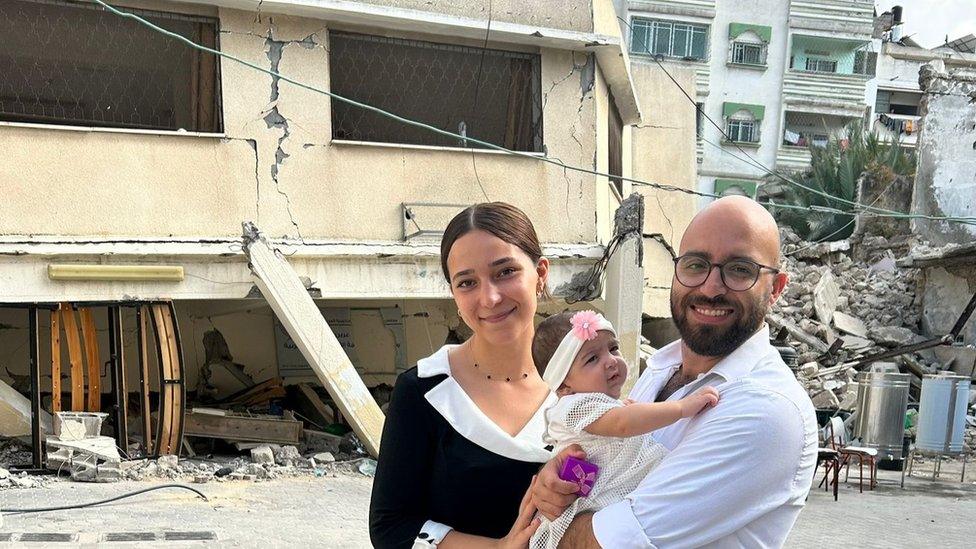
Marian Saba's daughter, Kylie, was one of nine babies baptised at St Porphyrius Church
Amid the destruction of many of Gaza's places of worship, faith has increasingly become a spiritual safety blanket for many Palestinians running away from death.
Marian Saba and her family continue to shelter at St Porphyrius Church with approximately 300 others, attending Sunday Mass weekly.
Nine days after it was damaged, her daughter Kylie was baptised. She described it as a bittersweet moment. What should have been a joyous occasion was anxiously brought forward by the fear that her child might be killed without one.
In a camp for displaced Palestinians in Rafah, Renad Alaa al-Bataa is far from her home and mosque in Khan Younis. Instagram is now her diary, with nostalgia often taking over, as she posts photos of her old life, including her time as a dentistry student.
But she says the Quran, which she reads daily, is her place of solace: "It lessens the heaviness of the night. If only you knew how hard the nights in Gaza are."
Additional reporting by Mehdi Musawi